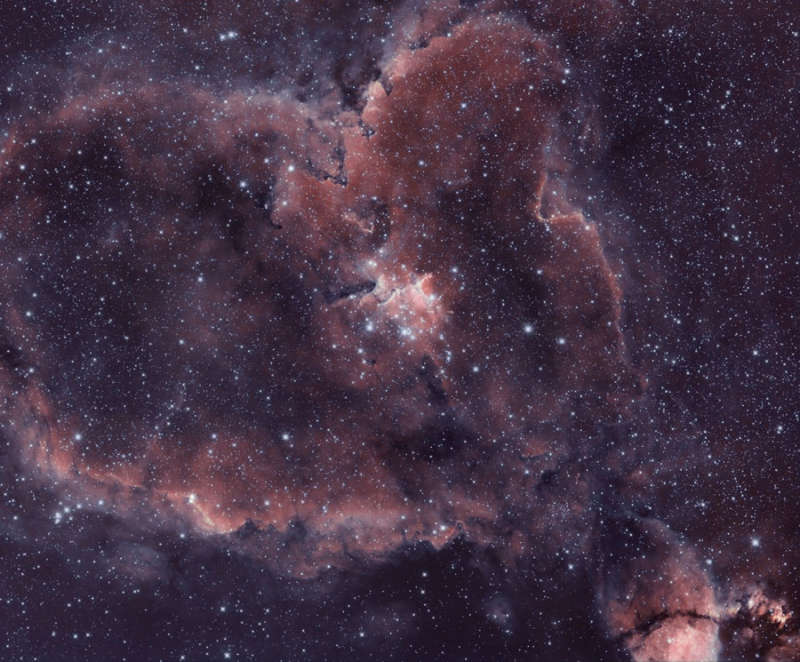Credit & Copyright: Daniel Verloop (Beursacademie)
Explanation:
What powers the Heart Nebula?
The large emission nebula dubbed
IC 1805 looks, in whole, like a human heart.
The nebula glows brightly in red light
emitted by its most prominent element:
hydrogen.
The red glow and the larger shape are all created by a
small group of stars near the
nebula's center.
A close up in
high dynamic range (HDR) spanning about 30 light years contains many of these stars is shown above.
This open cluster of stars contains a few
bright stars nearly 50 times the mass of our Sun,
many dim stars only a fraction of the mass of our Sun, and an
absent microquasar
that was expelled millions of years ago.
The Heart Nebula is located about 7,500 light years away toward the
constellation of Cassiopeia.
1999 2000 2001 2002 2003 2004 2005 2006 2007 2008 2009 2010 2011 2012 2013 2014 2015 2016 2017 2018 2019 2020 2021 2022 2023 2024 2025 |
Yanvar' Fevral' Mart Aprel' Mai Iyun' Iyul' Avgust Sentyabr' Oktyabr' Noyabr' Dekabr' |
NASA Web Site Statements, Warnings, and Disclaimers
NASA Official: Jay Norris. Specific rights apply.
A service of: LHEA at NASA / GSFC
& Michigan Tech. U.
|
Publikacii s klyuchevymi slovami:
Heart Nebula - emission nebula - open cluster - tumannost' - emissionnaya tumannost' - Rasseyannoe skoplenie
Publikacii so slovami: Heart Nebula - emission nebula - open cluster - tumannost' - emissionnaya tumannost' - Rasseyannoe skoplenie | |
Sm. takzhe:
Vse publikacii na tu zhe temu >> | |
